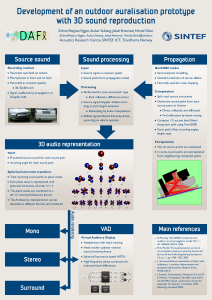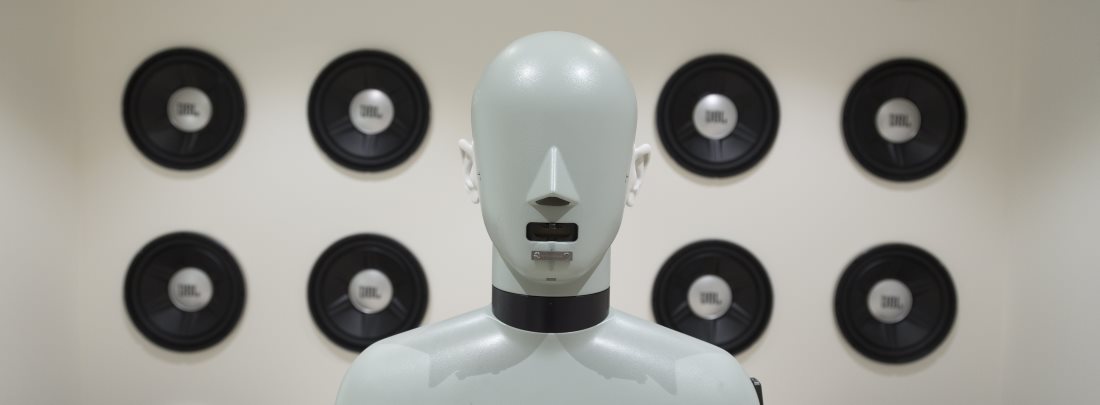In the MAUS project, we have developed a prototype of a traffic auralisation tool. The idea is to realistically imitate the sound of traffic, to give an idea of how it will sound in cases that have not been realised yet, and to show the effects of various noise-reducing measures. We have previously given a simple description of how the tool works together with sound examples on this blog.
In early December, we presented a paper and a poster on the MAUS auralisation tool at the 18th International Conference on Digital Audio Effects (DAFx-15) here in Trondheim. This conference was organized by the Music Technology and Acoustics groups at NTNU.
 You can see a picture of our poster on the right. The full poster can be downloaded from ResearchGate. In addition to this poster, we had a demo where people listened to the traffic auralisation through head-tracked headphones, so that the playback changed naturally with the listeners’ head movements. This demo was quite busy, and we were very happy with the number of pleased listeners!
You can see a picture of our poster on the right. The full poster can be downloaded from ResearchGate. In addition to this poster, we had a demo where people listened to the traffic auralisation through head-tracked headphones, so that the playback changed naturally with the listeners’ head movements. This demo was quite busy, and we were very happy with the number of pleased listeners!
The conference article, which describes our prototype tool in technical detail, can also be downloaded from ResearchGate or from the DAFx-15 website itself along with all the other articles from that conference. The article’s abstract is:
Development of an outdoor auralisation prototype with 3D sound reproduction
Erlend Magnus Viggen, Audun Solvang, Jakob Vennerød, Herold Olsen
Auralisation of outdoor sound has a strong potential for demonstrating the impact of different community noise scenarios. We describe here the development of an auralisation tool for outdoor noise such as traffic or industry. The tool calculates the sound propagation from source to listener using the Nord2000 model, and represents the sound field at the listener’s position using spherical harmonics. Because of this spherical harmonics approach, the sound may be reproduced in various formats, such as headphones, stereo, or surround. Dynamic reproduction in headphones according to the listener’s head orientation is also possible through the use of head tracking.




